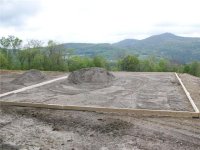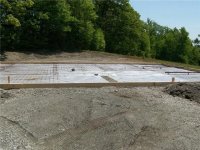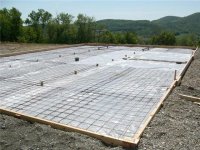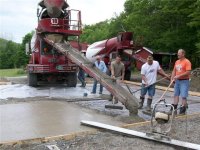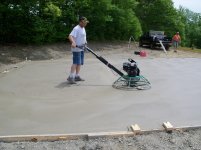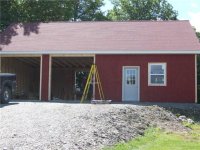Gary Fowler
Super Star Member
- Joined
- Jun 23, 2008
- Messages
- 11,998
- Location
- Bismarck Arkansas
- Tractor
- 2009 Kubota RTV 900, 2009 Kubota B26 TLB & 2010 model LS P7010
I watched a tract home builder building the home next to me when I lived in Houston, Texas area. He came in with a dozer and stripped off the grass from the wet black clay, hauled in several dump truck loads of sand for which he had to use the dozer to pull the dump trucks in and out, then dug in the underground sewer lines. Backfilled with Bobcat by just pushing in the sand; I never saw any compactor on the premises. He then threw up some 6x planking for forms and here comes the concrete trucks. If that slab isnt already cracked it for sure will be soon. Only steel in the slab was 6x6 wire mesh that was laid on the plastic vapor barrier and may or maynot have even been pulled up in an attempt to get it mid way of the slab. This is the way most tract homes are built which is why most of them have cracked slabs in the Houston area. They should really be built on concrete piers with a floating slab on top due to all the highly expansive clay soil but there is no code there that requires it.
You have to have a well compacted substrate for the concrete to set on, otherwise it is going to crack. Minute drying shrinkage cracks are to be expected in any slab, but these wont hurt your foundation. It is the settling of the soil underneath that has destroyed many houses.
Put lots of effort into getting good compaction of the soil base especially over your sewer trenches where native soil has been displaced. Here in Bismarck, we have rocks with some clay to hold them together so it is a good foundation to put concrete on. Some other places are not so lucky.
PS: I spent $12,000 putting in drilled piers to fix the cracked slab on my former residence due to the same type of workmanship described above. There is no way in he!! I would ever buy another tract built home. They are all just thrown together regardless of the final price. They put a $2000 foundation under a $400K home and call it good.
You have to have a well compacted substrate for the concrete to set on, otherwise it is going to crack. Minute drying shrinkage cracks are to be expected in any slab, but these wont hurt your foundation. It is the settling of the soil underneath that has destroyed many houses.
Put lots of effort into getting good compaction of the soil base especially over your sewer trenches where native soil has been displaced. Here in Bismarck, we have rocks with some clay to hold them together so it is a good foundation to put concrete on. Some other places are not so lucky.
PS: I spent $12,000 putting in drilled piers to fix the cracked slab on my former residence due to the same type of workmanship described above. There is no way in he!! I would ever buy another tract built home. They are all just thrown together regardless of the final price. They put a $2000 foundation under a $400K home and call it good.
Last edited:
